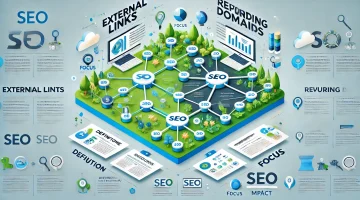
Content Structure Optimization: Enhancing SEO, Readability, and User Engagement
Outline:
- Introduction
Explanation of content structure optimization and its importance
Brief overview of benefits for SEO, user engagement, and search engine crawlability
- Key Components of Content Structure Optimization
Headings (H1, H2, H3) and hierarchy
Strategic keyword usage
Logical content flow and internal linking
Formatting techniques (bullet points, visuals, etc.)
- The Role of Structured Content in SEO
Featured snippets and zero-click search optimization
Schema markup for content structure
Technical aspects (load speed, mobile optimization)
- Benefits of Content Structure Optimization for Search and Users
Enhanced crawlability for search engines
Improved user experience and engagement
Increased chances for featured snippets and higher rankings
- Best Practices for Effective Content Structure Optimization
Tips for structuring content with headings, keywords, and visuals
Maintaining readability and relevance
- Conclusion
Summary of benefits and best practices
Importance of staying updated with SEO trends
Introduction
Search engine optimization (SEO) is a constantly emerging field. Likewise content structure optimization has emerged as a leading strategy for improving both search engine rankings and user experience. This approach involves arranging information in a clear, organized manner, allowing readers to navigate easily, while enabling search engines to understand and index the content effectively.
Optimizing content structure helps pages rank higher in SERP. By focusing on user-friendly formats that match search intent, including proper headings, bullet points, and relevant visuals. In this article, we’ll explore key components, best practices, and the benefits of content structure optimization.
1. Key Components of Content Structure Optimization
Headings and Hierarchy
Headings (H1, H2, H3) organize content, helping both users and search engines understand the main points and flow. Each article should have a single H1 tag that conveys the main topic, followed by H2 and H3 tags for subtopics and details. This hierarchy improves readability, especially for users scanning the content, and enhances search engines’ ability to identify important keywords and content relevance.
Strategic Keyword Usage
Effective content structure incorporates keywords in a strategic yet natural manner. Primary keywords appear in the title and H1 tags, while secondary keywords and related terms are placed in H2 and H3 headings and body text. Tools like Ahrefs and SEMrush can identify high-impact keywords, enabling SEO-friendly structuring of headings and paragraphs. This approach aligns with user intent, ensuring the content remains relevant.
Logical Flow and Internal Linking
Creating a logical flow within the content—from general information to specific details—engages readers by offering clarity and coherence. Internal linking connects related articles, reinforcing the content hierarchy and improving site navigation. These links help search engines understand the relationship between pages, improving crawlability and directing readers to other valuable resources.
Formatting Techniques
Structured formatting makes content more digestible. Bullet points, numbered lists, and tables break down complex ideas, while visuals such as images or infographics support the text. Well-formatted content is more likely to be featured in search engine snippets, boosting engagement and encouraging social shares.
2. The Role of Structured Content in SEO
Featured Snippets and Zero-Click Searches
Structured content is more likely to be selected for featured snippets, especially when content is formatted with lists, tables, and concise answers. With the rise of zero-click searches, where users find answers directly on the SERP it’s essential to format answers within headings and lists. This enables content to rank well even without requiring clicks.
Schema Markup for Content Structure
Schema markup, like structured data from Schema.org, provides additional context, making it easier for search engines to interpret the page’s content. This markup boosts visibility and may improve click-through rates by displaying enhanced information on SERPs, like reviews or product details.
Technical Aspects (Load Speed, Mobile Optimization)
Technical elements impact both search engines and user experience. Optimizing load speeds, reducing bounce rates, and ensuring content is mobile-friendly are essential parts of content structure optimization. Google’s Core Web Vitals emphasize the importance of speed and user experience, so maintaining these standards can improve rankings and retention.
3. Benefits of Content Structure Optimization for Search and Users
Enhanced Crawlability
Organized content with clear headings, internal links, and schema markup helps search engines crawl and index pages accurately, improving discoverability and rankings. Structured content signals to search engines that the page is informative and relevant, aligning with Google’s user-focused algorithms.
Improved User Experience
Well-structured content makes it easier for readers to find the information they need. Engaging content formats keep readers on the page longer, decreasing bounce rates and improving overall engagement metrics. Users are more likely to return to sites that provide a positive experience, increasing site credibility and traffic.
Higher Chances for Featured Snippets and Better Rankings
Google favors structured content for featured snippets. By optimizing headings, lists, and keywords, the content is more likely to be displayed directly in the SERP as a quick answer, drawing more attention to the page and potentially increasing organic traffic.
4. Best Practices for Effective Content Structure Optimization
Use Clear Headings and Logical Structure
Create a hierarchical structure with clear headings and subheadings that provide context. Each section should address specific aspects of the topic, improving readability and searchability.
Implement Keywords Naturally
Integrate keywords within the structure naturally, avoiding keyword stuffing. Use related terms and variations in subheadings and body content to increase relevance and improve SEO rankings.
Enhance with Visuals and Lists
Break up text-heavy sections with visuals, infographics, and lists that convey information succinctly. Visuals are engaging, increase social shares, and improve page performance metrics.
Leverage Schema Markup
Where relevant, use schema markup to enhance content understanding and display within search results. This can lead to more prominent placements on SERPs, which boosts traffic and brand visibility.
Conclusion
Content structure optimization is a vital SEO strategy for improving both search visibility and user engagement. By focusing on headings, logical flow, keyword integration, and visual formatting, businesses can create content that is both readable and SEO-friendly. As the digital landscape continues to evolve, staying updated on structured content techniques and user-focused SEO strategies will help ensure ongoing success in search engine rankings and audience engagement. Embracing content structure optimization equips websites to meet both search engine requirements and user expectations, making it a cornerstone of effective SEO.



